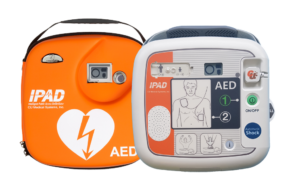Understanding Automatic and Semi-Automatic Defibrillators
When you’re preparing to buy a defibrillator, deciding whether to choose an automatic or a semi-automatic model is crucial. This guide will clarify the differences and benefits of each type, helping you make a well-informed decision.
Exploring Automatic Or Semi-Automatic Defibrillators
Both automatic and semi-automatic defibrillators are critical for diagnosing and treating dangerous types of cardiac arrhythmias, such as ventricular fibrillation or pulseless ventricular tachycardia. These conditions require immediate action to prevent fatal outcomes.
Fully Automatic Defibrillators
Fully automatic defibrillators simplify the emergency response by eliminating the need for the user to manually trigger a shock. Here’s how they operate:
- After activation, the device instructs the user through the pad placement on the patient’s chest.
- It then automatically analyses the heart rhythm.
- If it detects a shockable rhythm, the device will administer the shock without any further input from the user.
This type significantly reduces user hesitation and speeds up response times since it automates the most critical decision during resuscitation.
Semi-Automatic Defibrillators
In contrast, semi-automatic defibrillators require user interaction to deliver a shock. They function as follows:
- The device analyzes the heart rhythm and alerts the user if a shock is necessary.
- It then prompts the user to press a clearly marked button to administer the shock.
This manual intervention allows the rescuer to ensure no one is touching the patient, thus enhancing safety during the shock delivery.
Choosing the Right Type
Choosing between an automatic or semi-automatic model should depend on the user’s preference for ease of use versus control over the treatment process. If ease and quick action are priorities, a fully automatic model is ideal. For those who prefer direct control over delivering the shock, a semi-automatic model offers that advantage.
Conclusion
Both defibrillator types are indispensable in emergency medical scenarios. Your choice should align with the user’s comfort level and the typical emergency situations they might face. Training and familiarizing yourself with the operation of your selected defibrillator type ensures that you are prepared to act effectively in a crisis.


Leave a Reply